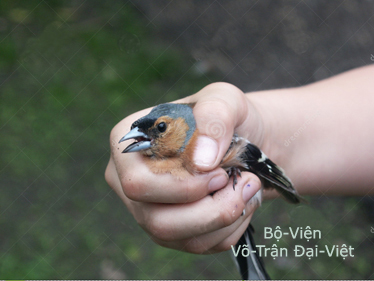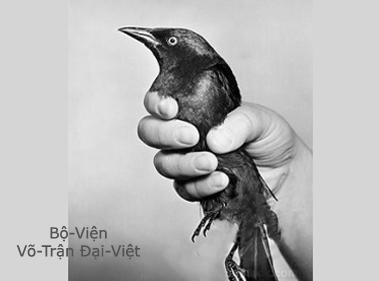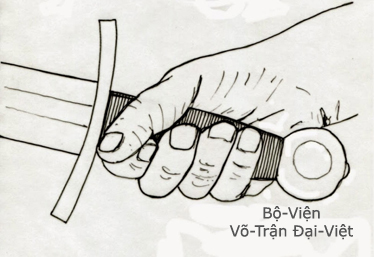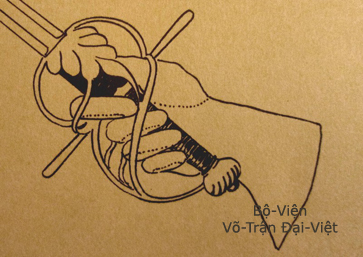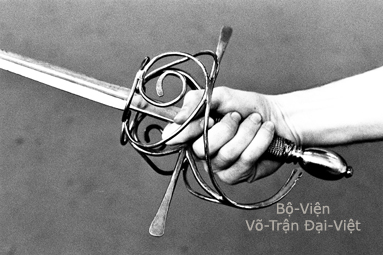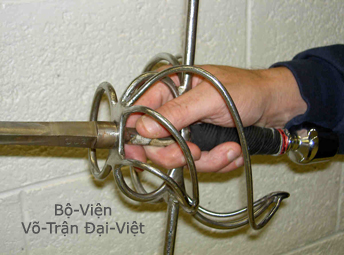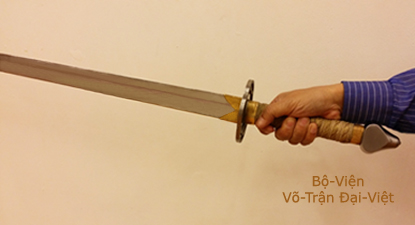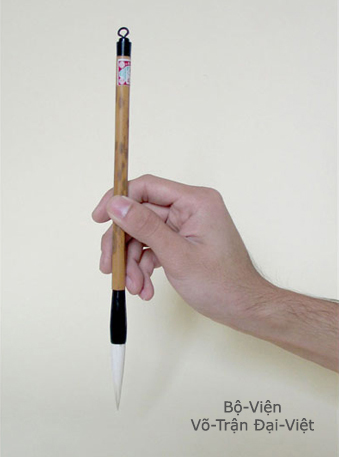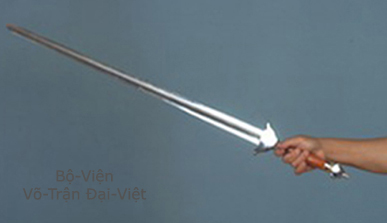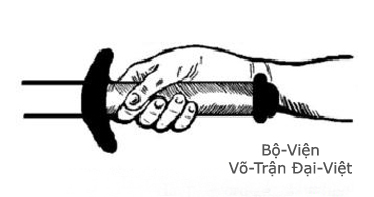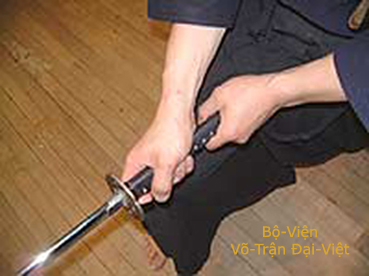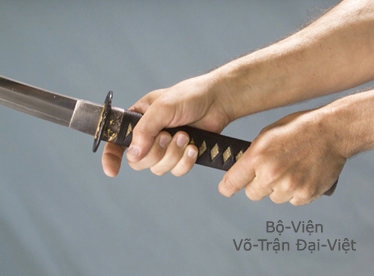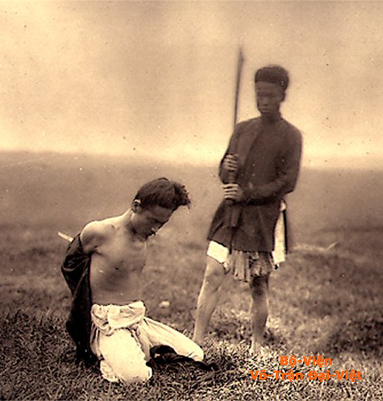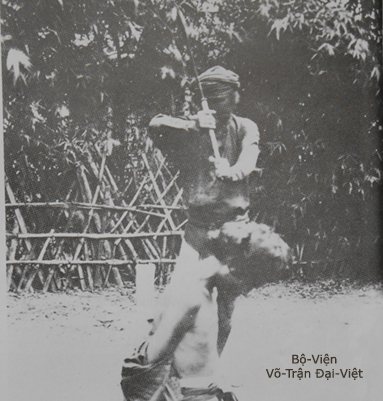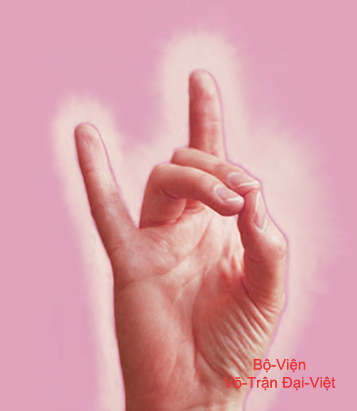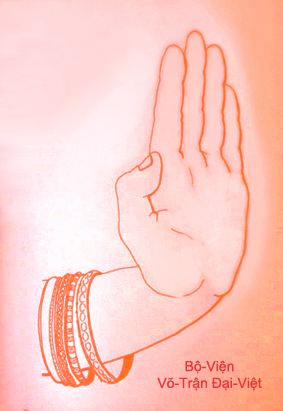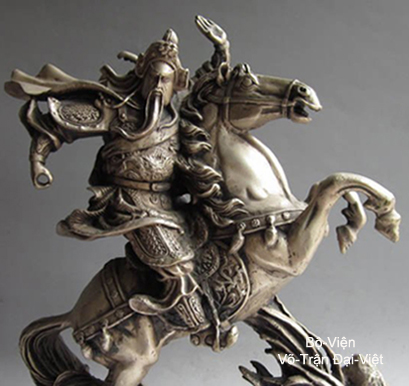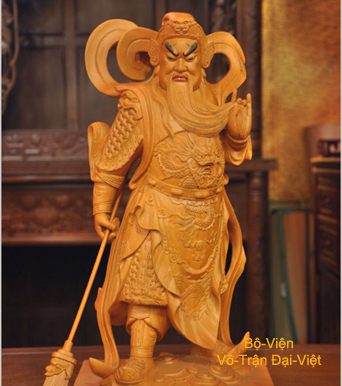II.
THE MEDIEVAL WEAPONS
2 - The Edged-Arms
Unique Sword
(Độc-Kiếm)
獨劍
« The Sword Wielding Method »
(Kiếm-Pháp)
劍 法
Introduction.
Almost 3,000 years ago, the Art of Sword - in Far-East as in Near-East (Central Europe) - includes always the «Sword Twirling» and the «Sword Figjting». The Martial Student must receive judicious teachings of the «Sword Twirling» according to the Art of Fencing for being able to takle the «Sword Fighting», that means he must well know the « Method of Sword wielding » (Kiếm-Pháp 劍 法) in order to become later a Swordman (Kiếm-Sĩ 劍 士).
It's precisely these two branches of «Sword Twirling - Vũ Kiếm 舞 劍» and «Sword Figjting - Đấu Kiếm 鬬 劍» which have forged the « Method of Sword wielding » (Kiếm-Pháp 劍 法) throughout Codified Sequences of Sword WIelding Kiếm-Thảo (劍 草) for allowing Student to know the application's pratical details of Fencing Theory in the Art of Sword.
- The Fencing Theory - Kiếm-Lý - is built on foundations from Nine Techniques of Sword called « Cữu-Kiếm » : that are Eight « Sword Cuts » and One « Sword Thrust ». The Art of the Mobilization of these Nine Techniques of Sword is precisely the Fencing Art
- The Fencing Art - Kiếm-Thuật - is built on foundations from « Manners of Sword Holding » in view for applying the « Various Manners of Sword Using ». Thus, Martial Student needs to be teached in all first time on various Manners of Sword Correctly Holding.
The Method of Sword Wielding and the Sword Holding
The Sword Holding is directly linked to the category of Sword in use. And a methodologically correct Sword Holding is an essential condition for exhalting the Mẹthod of Sword Wielding.
In the West, there was Gomard, the Fencing Master of the France King's Grey Mousquetaires since the bygone days who was attending this celebrious advice : « To hold the Sword is like to hold a Bird in one's hand. If we held it too firmely, this Bird should die. If we held it too softly, this Bird should fly away from our hand. ».
« If we held it too firmely,
|
« If we held it too softly,
|
Sword Holding according to Sword Wielding Method |
Sword Holding according to Sword Wielding Method
|
Rapière Holding according to Sword Wielding Method |
Rapière Holding according to Sword Wielding Method
|
In the Far-East, there were Chinese Fencing Masters of the past time, since the Period of TÙY (SUY) Dynasty (581~618 AD) and the Period of ĐƯỜNG (TANG) Dynasty (618~907 AD), who compared the Scrimicy with the Calligraphy and were attending this renamed profound and mysterious advice : « To Hold the Sword like to Hold the Brush - Cầm Lợi-Kiếm như cầm Mao-Bút ».
As for Fencing Masters from Đại-Việt in bygone days, they always given this precious realistic teaching : « We must Hold the Sword according to Three Celestian Fingers and Two Terrestrian Fingers Method - Cầm Kiếm phải cầm theo Tam-Thiên Lưỡng-Địa Ngũ-Chỉ Pháp » ; that means « We must Hold the Sword with Five Fingers according to the method of Three Fingers Yang turning towards the Sky and Two Fingers Yin turning downwards the Earth ».
The word «
It's about the Sword Holding according to the «
Sword Holding according to Fencing Art from Đại-Việt |
Brush Holding in the Hán & Nôm Calligraphy
|
Sword Holding according to
|
Sword Holding according to Sword Wielding Method
|
Two-handed Katana Holding according to
|
Two-handed Katana Holding according to
|
Thousand autumns in a lapse of time :
|
Thousand autumns in a lapse of time :
|
The Method of Sword Wielding and the Fencing Mûdra
In nations of same Culture in the Far-East as well as China, Korea, Tibet and Đại-Việt, the One-Handed Sword wielding is often directly in relation with the other hand doesn't using the Sword Wielding but using the Digital Gesture, called Sword Seal (Kiếm Quyết) or Fencing Mûdra, orginating from Two Mûdras which are the Prâna-Mûdra and the Apâna-Mûdra.
However, in the Sword wielding the Prâna-Mûdra is the much more used as Fencing Mûdra, and the Apâna-Mûdra is very rarely used. It is only in the wielding of the Cavalry Long-Đao Vouge and Siêu-Đao Vouge that these two Mûdras Prâna-Mûdra et Apâna-Mûdra are employed.
Digital Gesture « Prâna Mûdra ».
|
Digital Gesture « Apâna Mûdra ».
|
In addition, the Method of Sword Wielding from Đại-Việt using in battlefields didn't employ these two Mudra previously quoted but employed Pâtaka Mûdra, i.e. Flag Seal Kỳ-Ấn 旗 印. It is true that Old Masters as well as Fencing Master Phi-Sơn Hải, Grand-Master Phạm-Thi, Grand-Master Ba-Phong, Grand-Master Lâm Ngọc Phú, ... have been all employed regularly the « Pataka Mudra » in their Method of Sword Wielding.
This « Pâtaka Mûdra », still called the « Great Hand Seal - Maha Hasta Mûdra (Đại-Ấn Chưởng), is often used in the Wielding of Pole-Arms ( Pertuisane Mâu, Vouge Siêu-Đao, Halberd Kích... )
« Pâtaka Mûdra - Flag Seal »
|
Master Trịnh-Quang-Thắng employed,
|
« Pâtaka Mûdra - Kỳ-Ấn 旗 印 »,
employed in Vouge Wielding.
|
« Apâna Mûdra »,
employed in Vouge Wielding.
|
The Method of Sword Wielding and the Breath Energy of the Sword
The Martial Student who goes looking for Sword Wielding (Kiếm-Pháp), needs in addition to look for to understand and to do research in the Breath Energy of the Sword (Kiếm-Khí).
The Breath Energy of the Sword (Kiếm-Khí is a concept has been experimented from Spiritual Perfecting Exercices of Sword Wielding through out a Spiritual Way Methodology, and that is not a very simple notion romanticized as we could know superficially through out swashbuckler serial movies realized from novels of celebrious writer Kim-Dung 金庸 (Jinyong).
In China, the Art of Sword from Wu-Dang School is based on the concept : « La Pensée et le Souffle sont les Rois, les Os et la Chair sont des Subordonnés - 意 氣 君 來 骨 肉 臣 ».
In Japan, the Art of Sword (Kenjutsu) owns this concept : « The Breath Energy, the Sword and the Body Unified in a same Spirit - Kikentai no ichi 気 剣 体 の 一 », and it was raised to the rank of " the Way of Sword - Kendo ".
As for as in Đại-Việt, the Art of Sword possesses this concept :
« To Accumulate Breath Energy and to Condense Spirit Energy
allow the Sword Breah Energy to Fly Off ».
« Súc-tích Khí, ngưng-đọng Thần, thì Kiếm-Khí vọt bay »
(Tụ Khí Ngưng Thần Kiếm-Khí Phi - 聚 氣 凝 神 劍 氣 飛).
- « To Accumulate », means "To Assemble a lttle thing for becoming much more" that's called « Tụ 聚 To Acumulate ».
- « To Condense », means "To Concentrate a Fluid" that's called « Ngưng 凝 To Condense ».
Why is the Spirit Energy Thần considered as a "Fluid " ? - Because the Spirit Energy Thần comes from the transformation of Breath Energy Khí which is inherent in a "Fluid " ; as well as the Breath Energy Khí comes from the sublimation of Seminal Essence Energy Tinh ; but Seminal Essence Energy Tinh originates from "Renal-Liquid Thận-Thủy 腎水" which is also inherent in a "Fluid ".
So thus, Martial Student of Đại-Việt Sword Wielding Method (Kiếm-Pháp 劍 法) needs to be teached by a person being already trained for the Three Jewels "Seminal Essence Energy Tinh - Breath Energy Khí - Spirit Energy Thần" Concentration Method in first time in order to be enlightened on the notion about the Breath Energy of the Sword (Kiếm-Khí 劍 氣).
The Codified Sequences and the Coded Poems
« The Sword Wielding - Kiếm-Pháp 劍 法 » from Đại-Việt includes numerous Codified Sequences writen down by a Coded Poem each transcribing Wielding Techniques of the Unique Sword and the one of Two Matched Swords, applying the Fencing Theory in the Art of Sword.
A - « The Codified Sequence of Unique Sword »
(Độc-Kiếm Thảo)
獨劍草
The Martial Student who wants to learn a Codified Sequence of Unique Sword need to know that's the one of Sword holding Single Edge or Double Edge. The confusion between these two kinds of Swords would lead of course to the decline of this Codified Sequence.
The Codified Sequence
of
« Pear Flowers Sword »
(Lê Hoa Kiếm)
棃 花 劍«

Pear Flowers in spring day
The basic Codified Sequence of Sword wielding from Sa-Long-Cương School System is the one of « Lê-Hoa Kiếm » including 46 Chain Techniques discribed through out 46 coded verses.
It's a Codified Sequence of single-edged Sword from antique China, exclusively preserved by our late lamented Grand-Master Trương-Thanh-Ðăng.
In reallity, that is a Codified Sequence of an antique Single Edge Sword from China, under Period of TỐNG (SONG - 960-1279) Dynasty, imported in Đại-Việt under the TRẦN (1225-1413) Dynasty . And the chain techniques of Sword wielding, in this Codified Sequence « Pear Flowers Sword - Lê-Hoa Kiếm », tangle the edged trajectories of the weapon enveloping the performer's body as much as steel petals, and they had been de facto compared with Flowers petals covering entirely spring Pear's branches, hence the name « Pear Flowers Sword » (Lê-Hoa Kiếm).
In nowadays, many Drill Halls in the world don't passed on correctly a certain number of Assaults & Lunges, according to the Coded Lines of Verse in Codified Sequence from « Lê-Hoa Kiếm » (Pear Flowers Sword), making this latter decadent, doesn't deserve any more the name « Pear Flowers Sword » (Lê-Hoa Kiếm).
- The first reason is the unfinished assimilation of Sword Wielding Art, as in Lunges « Tuyết-Ngộ Cuồng-Phong », « Luân Thân Hồi Kiếm » for example.
- The second reason is the gap in the understanding of sino-vietnamese characters, as in these Lunges such as « Bạch-Xà Lan Lộ », « Hồi Đầu Phi Kiếm », etc.
The Codified Sequence
of«
« Clouds Dragon Sword »
( Long-Vân Kiếm )
龍 雲 劍
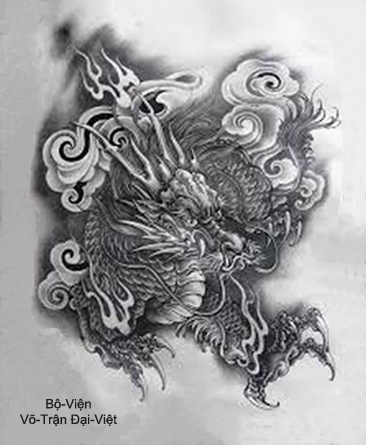
Fencing Techniques changing suddenly
like a Dragon
hiding in the clouds, which transforms oneself by struggling
with the fury of wind and the rage of storm.
The Codified Sequence of « Clouds Dragon Sword - Long-Vân Kiếm 龍 雲 劍 » wielding is one of fondamental and essential Codified Sequences from Đại-Việt Traditional Fencing Art.
The chain techniques in this Codified Sequence give Martial Students some Traditional Fencing practice to excel in Sword Holding at Right Way called « Chánh-Thủ-Kiếm » through four ways to hold the Sword as Chignon-shaped Holding (Loa-Bả 螺 把), Pincer-shaped Holding (Kiềm-Bả 鉗 把), Misleaded Holding (Ðiêu-Bả 刁 把), Leaned Holding (Áp-Bả 壓 把) and in Sword Holding at Wrong Way called «Phản-Thủ-Kiếm» through five ways to wield the Sword as To Twirl (Luân 綸), To Wrap (Vân - 耘), To Pierce (Xuyên 穿), To Carve (Quái 劊), To Sweep (Tảo 掃).
This Codified Sequence « Long-Vân Kiếm 龍 雲 劍 » includes merged techniques of attack and defense changing suddenly, like a Dragon hiding in the clouds, showing sometimes his head, sometimes his body or his tail, and which transforms oneself by struggling with the fury of wind and the rage of storm.
The Codified Sequence
of
« The Long Sword »
« Trường-Kiếm »
長 劍
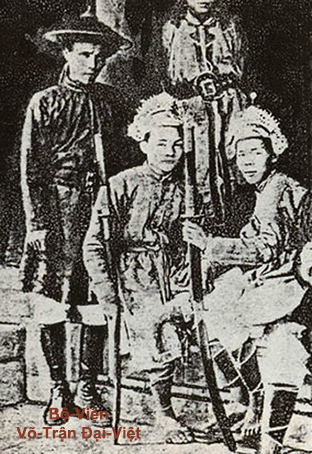
Fencing techniques combining
the Sword wielding and the Sabre-Gươm wielding
with dynamic, unpredictable.transformations.
The celebrious Codified Sequence of Battlefields Martial Arts from Bình-Định teaching the use of the « Long Sword - Trường-Kiếm 長 劍 » is one of precious and rare SCodified Sequence in Fencing Art from Đại-Việt, including 28 Verses codiffying Coups and Bottes of the Martial Fencing.
That's one of Codified Sequence handed down to posterity by the School System of Grand Master PHẠM-Tường, whom current successor is the Grand-Master PHẠM-Thi.
This Codified Sequence of the « Long Sword - Trường-Kiếm 長 劍 » contains Fencing Coups & Bottes of Attack and Defence of Sword in synergy with the Sabre-Gươm wielding, by dynamic transformations, half-feint and half-offensive, according to the Long Sword specific wielding Art from Đại-Việt. We can say without any exaggeration that this rare and precious Codified Sequence of « Long Sword - Trường-Kiếm 長 劍 » is precisely the symbol of the Fencing Art from Đại-Việt.
Committee of TRỊNH Quang Thắng. |
-
Discussion about the Sword
-
Discussion about the Fencing Art of the Unique Sword
-
Discussion about the Unique Sword Wielding
-
Discussion about the Two Matched Swords
-
Discussion about the Fencing Art of the Two Matched Swords
-
Discussion about the Two Matched Swords Wielding
Copyright © 2004 - 2018 by ACFDV - All rights reserved.
